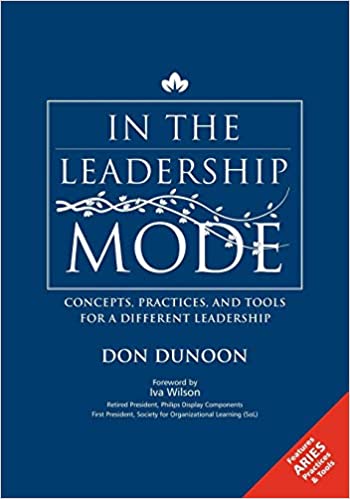If you have been a leader for very long, you have heard the question, “Why do we need to change?” In 1967, British Prime Minister Harold Wilson declared, “He who rejects change is the architect of decay. The only human institution which rejects progress is the cemetery.” (1) So we must change if we want to live. Long before the 1960’s, philosopher Plato used Heraclitus’ axiom, “Everything changes and nothing stands still.” For millenia, humans have adapted to survive – or they haven’t, and didn’t. So asking why we need to change is really like asking why we need modern medicine or why electricity is useful: there are many examples all around us of why significant change can shift life for the better.
Instead of asking why we need to change, then, leaders assess the landscape and ask what, who, how, and when we will change. These are the questions that are answered when you engage in an organizational change process, and there are multiple change models to consult.
Depending on the type of organization and the type of change, there are plenty of change process models to consider as you navigate how to lead fruitful change. The ways to lead change vary; I will highlight some of the better-known models and theories so that you can answer the questions of what, who, how, and when we will change as you initiate and manage fruitful change in your context.
But first, a word of caution. In 2007, researchers at Gallup asked a series of questions on whether Christians rely more on human reason or on an outside power such as God for moral guidance and for planning for their future. For many, human reason trumped God in their responses. (2) The organizational change management processes, models, and theories highlighted here are helpful tools in determining the what, who, how, and when. But in all of this, I encourage you to make sure to remember Who leads you as you lead change.
The following three change models illustrate planned organizational change (as opposed to unplanned change). They are intended to illustrate changing organizational systems processes. Let’s take a look at the theory of the change models and then the application of how they might look in a real life church setting.
Unfreeze: Change: Refreeze – Lewin’s Model of Change
A social psychologist named Kurt Lewin researched group dynamics and the impact of leadership on groups. His model is not a prescription for change with a step-by-step how-to process; rather, it’s an explanation of how change occurs.
First, the organization becomes aware of the need to change. When the status quo is no longer working, the organization must unfreeze – releasing its grip on continuing to do the same things in the same way. The second step is implementing change. The organizational participants react to the lack of equilibrium by generating new responses and actions that are more effective. Finally, the organization refreezes as it assimilates the changes and regains equilibrium, operating effectively again.
For instance, during any snow event in the American South, “is it sticking?” is the first question asked. In the South, the ground isn’t frozen. When snow falls, it melts. Unless there is an extreme environmental change (temperature drops and snowfall increases), the snow disappears on contact. Lewin’s refreezing takes place after change has been implemented. It is the time when leaders check in to see if the new responses and actions deemed more effective are “sticking.”
What it looks like in your church: print & digital communications
Every process in a congregation can be evaluated in light of the Unfreeze-Change-Refreeze model. It provides the language of change to every level of leadership, whether staff, lay, or volunteer. In this way, everyone can discuss change in terms of solving a problem and increasing effectiveness.
For example, let’s say there are complaints about church communication. Many churches have leaned into social media and multimedia communication, leaving print-lovers behind, while other churches refuse to leave the Gutenberg era to embrace the opportunities of electronic communication. Both can result in frustrated churchgoers or visitors. This is a problem.
Using the Unfreeze-Change-Refreeze model, we see a basic movement unfold: first, discover the need for change due to consistent communication problems affecting daily function; then, identify new processes and activate new approaches that will lead to effective communication with multiple constituents; and finally, implement the new processes and approaches and evaluate their impact.
Lewin’s ideas have been used as the basis of many modern change models in which you will see elements of unfreeze-change-refreeze. For example, Harvard Business School Online has a course that uses Lewin’s model as the framework for change. (Visit here for a modern, expanded example of Lewin’s model.)
The Change Path: Awakening: Mobilization: Acceleration: Institutionalization
The change path model of organizational change is another adaptation of Lewin’s model (3), in which there are four stages:
Awakening
Mobilization
Acceleration
Institutionalization
This is an excellent model for making changes to processes within an organization (which is distinct from changes in culture, mission, or values). The awakening stage is similar to Lewin’s unfreezing stage. More than just an awareness of the need for change, in awakening, the organization must consider the nature of the change (planned or unplanned, internal need or external pressure) and its alignment with the organization’s vision. Once the awakening is defined in a way that everyone can understand, mobilization begins. Mobilization is the process of identifying the distance between the current and desired states: what needs to be done, who needs to do it, what the cost is, and other questions. In the acceleration stage, plans are drawn up in response to the mobilization questions. Institutionalization is the implementation of the plans and refreezing of the organization around the new process.
What it looks like in your church: gaps between denominational statement and practice
In the past 15 years, one denomination with which I’ve interacted was awakened to the fact that many churches had local membership processes and requirements that varied from the denominational membership requirements. The policy “on the books” did not match the policy in practice. This was a problem.
Several decisions could be made: ignore the discrepancy, allowing local churches to continue to be out of alignment; put pressure on local churches to conform to the denomination’s membership requirements; or adjust the denominational requirements to better match the local churches’ current practice.
Awakening includes defining the nature of the change and describing it in the vernacular (in this case, proposals submitted to the General Board).
Mobilization took place in the General Board sub-committee, which was tasked with reviewing the various proposals and determining the gap between the present state of some churches and the future state of membership in the denomination.
Bureaucracies have specific processes in place to manage planned change, so the mobilization phase is clearly defined, but to allow for some collaboration, plans for bridging the gap through action planning and implementation were drawn up. When the final proposals were presented, they had been combined and rewritten in a way that reflected that collaboration.
The final step was institutionalization. Just changing the written “rules” of the denomination was not enough to institutionalize the change. The change had to be implemented at all levels. Resources were created for churches to initiate the change. Annual processes changed at the local organization level, which carried the weight of making significant changes not only to processes but also in local culture. The change needed to be measured to determine effectiveness of the change initiative, which required changes in data collection and reporting.
The challenge for many leaders is the desire to jump straight from awakening to institutionalization: “I have identified a problem and the most logical solution—make it so” (as we dictate the obviously logical solution to the staff/board/volunteers). The process of moving from awakening into a time of collaborative analysis and planning prior to institutionalization is imperative to the success of the change. The contribution and buy-in of those who need to activate the change cannot be overemphasized. That process is even further explained in Kotter’s model.
Kotter’s Eight-Stage Change Process
Task-oriented planners (or those who need someone to provide a step-by-step process so that they will not venture off the change path) will appreciate John Kotter’s detailed map for planned change. The eight steps begin by creating a climate for change, by
1) Increasing urgency
2) Building a guiding team
3) Getting the vision right, and
4) Communicating for buy-in. This moves the entire organization in the direction of the change,
5) Enabling action and
6) Creating short-term wins. The implementation and maintenance of the change continue as the change leaders then
7) Don’t let up and finally
8) Make it stick.
This framework was first introduced in Leading Change, further supported by real-life success stories in The Heart of Change and, because winning the first step is imperative, an entire book dedicated to A Sense of Urgency.
What it looks like in your church: a must-have/user-friendly resource
In Kotter’s best-selling book Our Iceberg is Melting (similar to the popular Who Moved My Cheese?) he walks the reader through the change process in an easy-to-apply parable. This is a great resource for a local board to use as a small group study in order to illustrate the process of change. It is also helpful to leaders to find their fit on a change team as they identify with characteristics in the illustration. It is also helpful in demonstrating to church leaders what has been shown to cause organizational change to fail time and time again, equipping them with steps to guide the organization through a difficult change initiative.
When Change Processes Aren’t Planned
These three organizational change models are all options for moving through planned change initiatives. However, we all know that circumstances external to the organization can force change and internal situations can pop up without notice. In the next post, we’ll examine helpful models for those times when we cannot respond to change with a strategic, step-by-step blueprint but rather are forced to make changes in the midst of chaos.
1 Wilson, H. (1967, January 24). Speech to the Consultative Assembly of the Council of Europe, Strasbourg, France, January 23, 1967. The New York Times, p. 12.
2 Gallup, G. H., Jr. (2007). Total trust: Trust is one of the basic bonds of relationships. Leadership Journal. Retrieved from http://www.christianitytoday.com/le/2007/july-online-only/day45.html
3 Cawsey, T. F., Deszca, G., & Ingols, C. (2020). Organizational change: An action-oriented toolkit (4th ed.). Thousand Oaks, CA: Sage.










